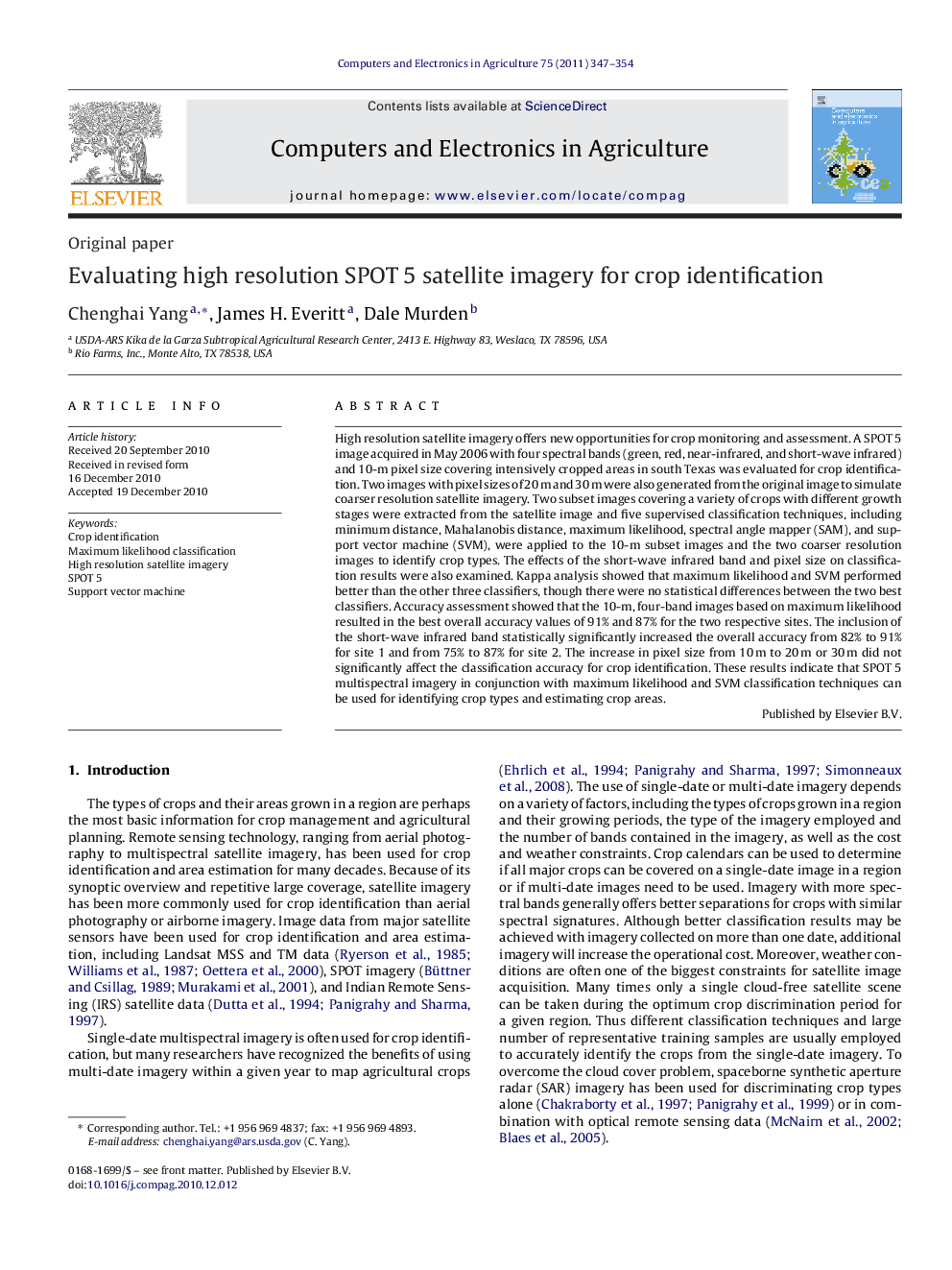| Article ID | Journal | Published Year | Pages | File Type |
|---|---|---|---|---|
| 85281 | Computers and Electronics in Agriculture | 2011 | 8 Pages |
High resolution satellite imagery offers new opportunities for crop monitoring and assessment. A SPOT 5 image acquired in May 2006 with four spectral bands (green, red, near-infrared, and short-wave infrared) and 10-m pixel size covering intensively cropped areas in south Texas was evaluated for crop identification. Two images with pixel sizes of 20 m and 30 m were also generated from the original image to simulate coarser resolution satellite imagery. Two subset images covering a variety of crops with different growth stages were extracted from the satellite image and five supervised classification techniques, including minimum distance, Mahalanobis distance, maximum likelihood, spectral angle mapper (SAM), and support vector machine (SVM), were applied to the 10-m subset images and the two coarser resolution images to identify crop types. The effects of the short-wave infrared band and pixel size on classification results were also examined. Kappa analysis showed that maximum likelihood and SVM performed better than the other three classifiers, though there were no statistical differences between the two best classifiers. Accuracy assessment showed that the 10-m, four-band images based on maximum likelihood resulted in the best overall accuracy values of 91% and 87% for the two respective sites. The inclusion of the short-wave infrared band statistically significantly increased the overall accuracy from 82% to 91% for site 1 and from 75% to 87% for site 2. The increase in pixel size from 10 m to 20 m or 30 m did not significantly affect the classification accuracy for crop identification. These results indicate that SPOT 5 multispectral imagery in conjunction with maximum likelihood and SVM classification techniques can be used for identifying crop types and estimating crop areas.
Research highlights▶ High resolution SPOT 5 imagery is useful for crop identification. ▶ Maximum likelihood and support vector machine performed better than other classifiers. ▶ Increase in pixel size from 10 to 30 m had minimal effect on classification accuracy. ▶ Inclusion of shortwave band in SPOT 5 image improved classification accuracy.
